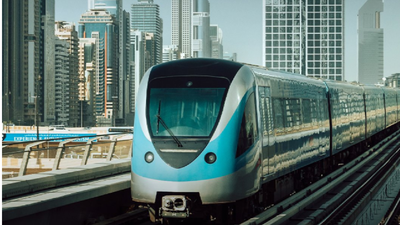
Dubai’s Roads and Transport Authority (RTA) recently completed a significant upgrade of ventilation and air conditioning systems on the Red Line and Green Lines of the Dubai Metro. The project encompassed 876 units across 14 stations, ensuring stable temperatures between 24–25°C even in peak summer, without disruption of services. The upcoming Phase 3 aims to enhance energy efficiency and sustainability through technological advancements.
Overview
The RTA concluded a comprehensive overhaul of 876 ventilation and air conditioning units in 14 metro stations along the Red Line, maintaining comfortable station temperatures of 24–25°C amidst Dubai’s scorching summer conditions. The next phase will concentrate on energy efficiency improvements and updating existing equipment to decrease energy consumption and promote sustainability.
Key Highlights
Wide Reach: The upgrade spanned across 14 stations and two car parks on the Red Line, marking the most extensive renovation of Dubai Metro’s cooling infrastructure to date.
Components Serviced: The project involved maintenance of air handling units, fan coil units, chilled water pumps, extract fans, smoke extract fans, and pressurisation units.
Maintenance Details: Tasks included bearing replacements, cooling coil upgrades, equipment cleaning, and dynamic balancing to ensure quiet, efficient, and reliable system operations.
No Disruptions: The work primarily took place during off-peak hours to prevent disruptions to metro services throughout the day.
Enhancing Passenger Experience
The continuous challenges posed by Dubai’s extreme heat necessitate a consistent approach to public transport. Maintaining a stable temperature between 24 and 25°C within stations not only enhances the journey experience but also ensures passenger safety and equipment durability, aligning with RTA’s strategic objectives for 2024-2030.
Future Plans
RTA is gearing up for Phase 3 of the ventilation and air conditioning upgrade, targeting the final 25% of fan coil units in public areas and air handling units in critical zones. Additionally, efforts towards energy optimization, including variable flow technology, are underway to reduce energy consumption and minimize the metro system’s carbon footprint.
This large-scale project signifies the collaborative efforts of RTA’s Rail Agency and Keolis-MHI, emphasizing operational efficiency and passenger safety throughout the renovation process.






